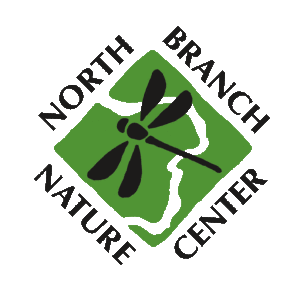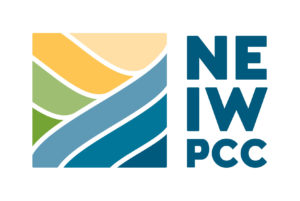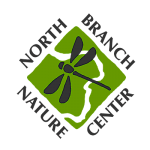A Watershed Tour
The parts of a river, from the mountains to the mouth.
Anatomy of a Healthy River
Important parts of a diverse and resilient river system.
Be Stream Smart!
What you can do to protect our rivers and streams.

Un-lawn
Mow less often and set the blade higher. Replace areas of lawn with woody plants and perennials. A wilder yard makes for much better stormwater retention and creates habitat for birds and other critters. Aerate compacted soil each year by creating deep holes with a pitchfork.

De-tox
Pesticides and fertilizers are extremely harmful to aquatic life, and the majority of chemical applications wind up in the waterways. Instead, use chemical-free pest control strategies, and add clover to naturally fertilize the grass in your (smaller) lawn.

Scoop the Poop
Dog poop is unlike that of wild animals, and contains a staggering amount of bacteria and nutrients that greatly impair water quality. Dog waste belongs in the trash, not on the trail or in the woods. For more, check out our piece on The Ecology of Dog Poop.
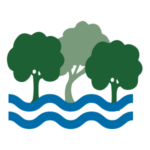
Buff Up
Maintain wide forested buffers by planting native, woody vegetation along streams (even small ones!) and rivers. This reduces erosion, absorbs and filters stormwater, and gives wildlife a place to move.

Build Better
Install home systems to manage stormwater. Use rain barrels to collect water from the roof for use in the dry season. Keep gravel driveways crowned, and install water bars to divert runoff into vegetation and away from storm drains. Rethink the amount of impervious surface you need in your yard, neighborhood, and community.

Drain Brain
Storm drains empty directly into the river, so be mindful of what goes in there. Wash cars at the carwash or on permeable ground, not in the street. Keep the drains clear of leaves, grass clippings, and gravel. Don’t dump trash, paint, or other waste down the storm drains.

Beaver Buddy
Encourage dams made by beavers over dams made by people. Beaver dams filter pollution and sediment while creating habitat, whereas concrete dams alter water levels and create barriers for wildlife movement.

Act Natural
Keep forests forested and wetlands wet! These intact ecosystems filter and store rain and snowmelt while regulating temperatures and nutrients. They are also critical to reducing floods and stormwater surges.

Room to Roam
Support city planning that lets the river wander. A healthy river needs to spill into its floodplain. Advocate against river straightening, channelizing or armoring. Instead, keep new buildings and roads away from the floodplain. As climate change increases storm severity, “room to roam” is the key to avoiding damaging floods downstream.
The North Branch River "Quest"
Explore the North Branch with this Quest that will bring you to our favorite places along the river. Learn about river ecology, history, and conservation in this family-friendly, rhyming adventure. Hard copies available at the trailhead kiosk and at our indoor aquariums.
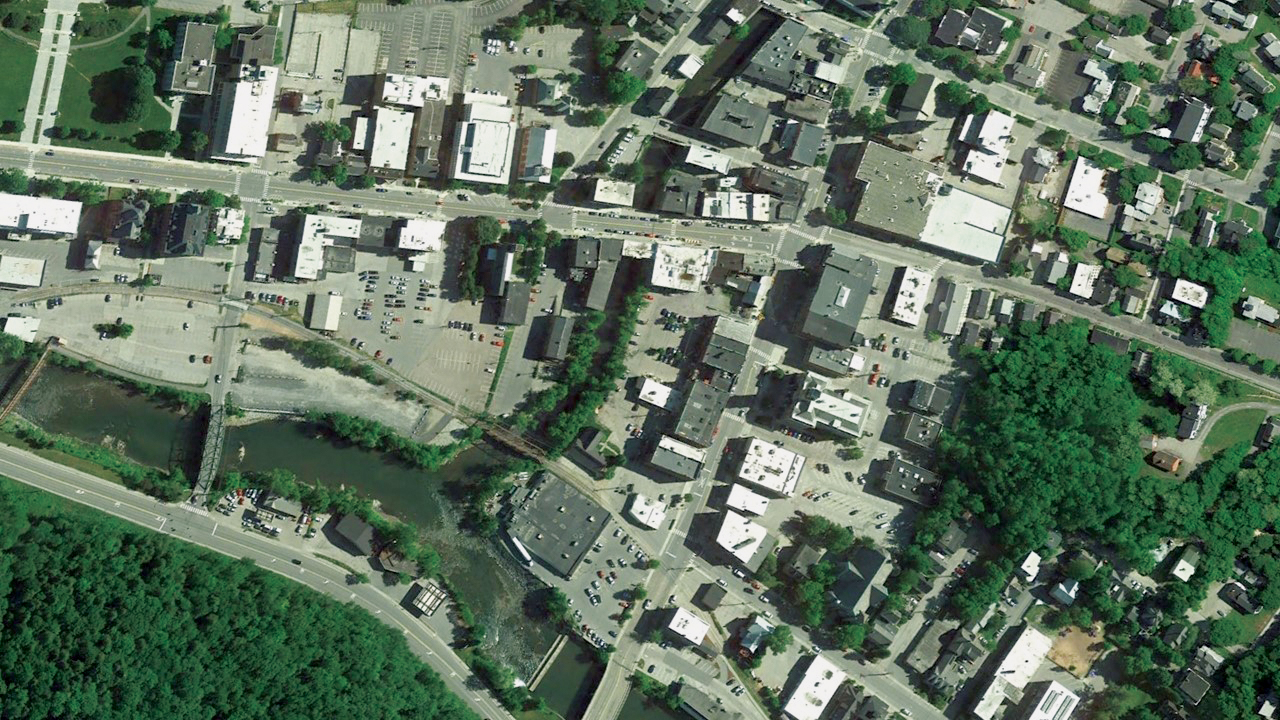
Thank You
The creation of this website, and the "North Branch Live Stream," was made possible by support from John & Liz Snell and members of the Montpelier community.
This work is a collaboration of Friends of the Winooski River and North Branch Nature Center. This project has been funded wholly or in part by the United States Environmental Protection Agency under assistance agreement (LC00A00604) to NEIWPCC in partnership with the Lake Champlain Basin Program.
Thank you to Maya Akazawa for species illustrations, and Linda Mirabile of RavenMark for graphic design.
"And in the quiet I hear the voice of the river passing among the rocks and over stones...
perhaps this is where our speech began. Maybe long ago before there were words,
there was only the river and the people listened to the water…and the quiet whispering.”
—John Francis, Planetwalker



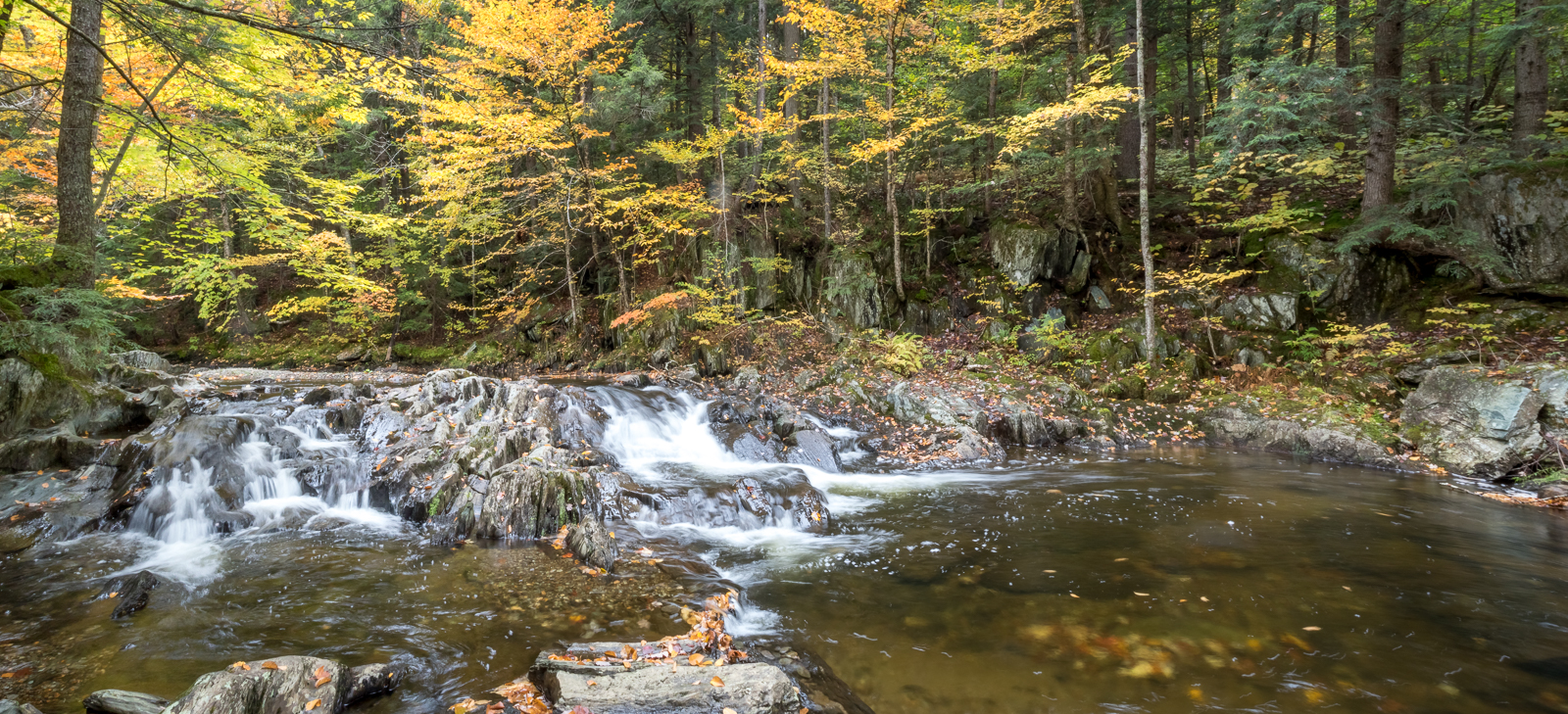
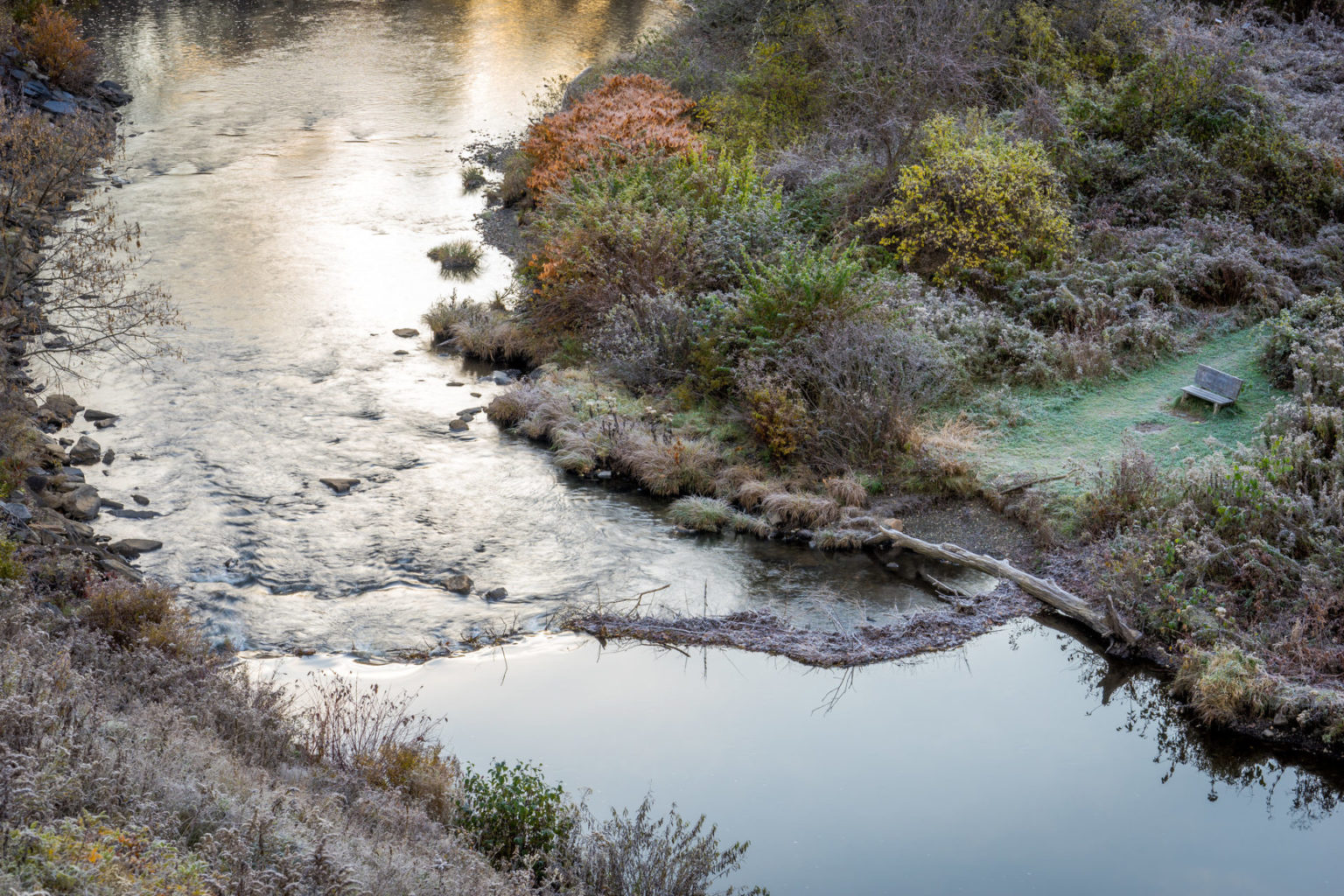
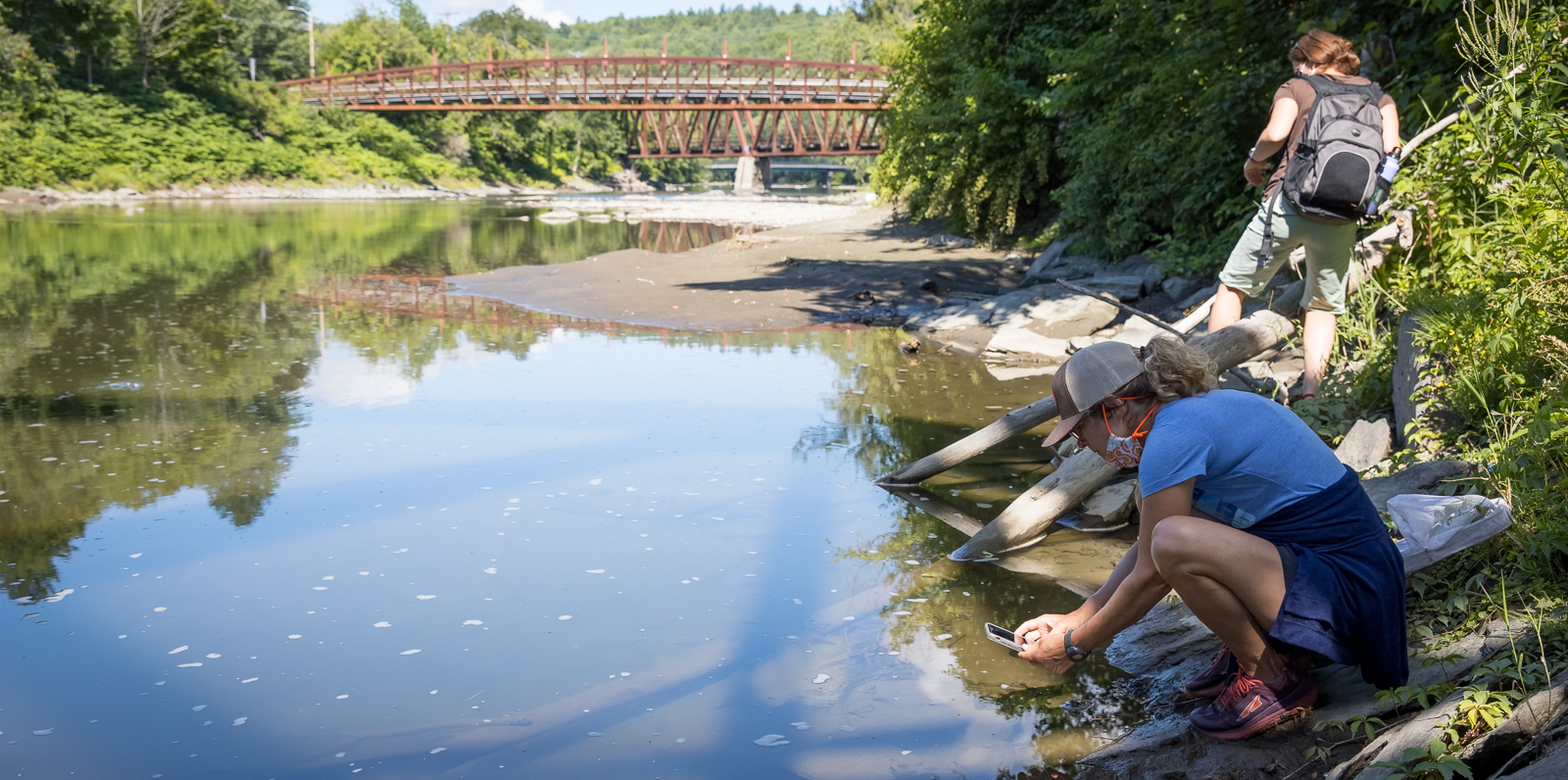
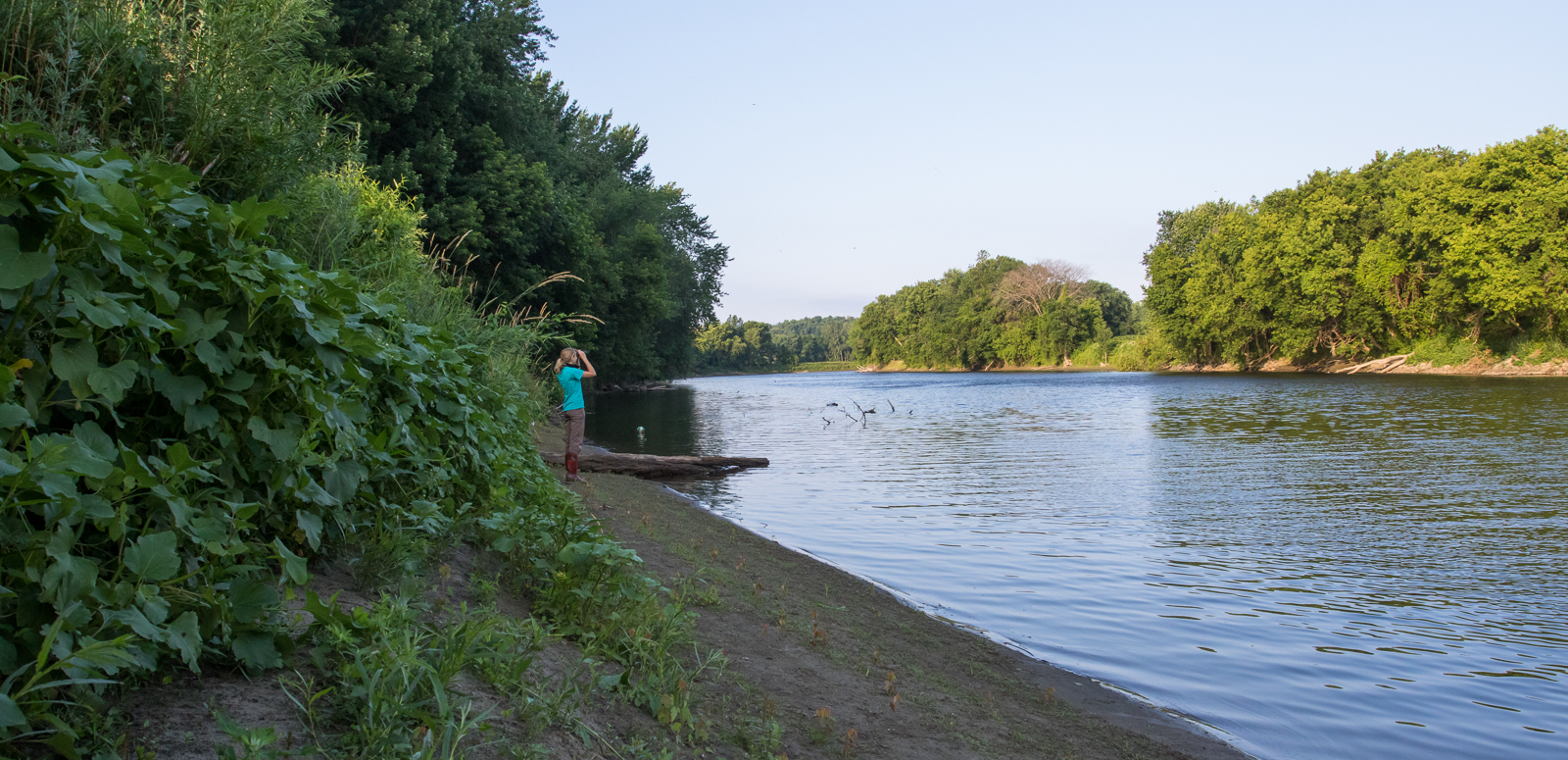 The wild area between a riverbank and the developed land beyond is called a riparian buffer. Wide buffers protect the watershed by slowing and filtering runoff into the river, stabilizing the banks from erosion via strong root systems, shading the water, and providing food and nutrients to aquatic life. Riparian buffers are also critical movement corridors for wildlife. Birds and mammals travel these areas to access different habitats that are otherwise cut off by human development.
The wild area between a riverbank and the developed land beyond is called a riparian buffer. Wide buffers protect the watershed by slowing and filtering runoff into the river, stabilizing the banks from erosion via strong root systems, shading the water, and providing food and nutrients to aquatic life. Riparian buffers are also critical movement corridors for wildlife. Birds and mammals travel these areas to access different habitats that are otherwise cut off by human development. ivers are always picking up and dropping off materials. Where the river moves fast, earth is excavated away — the more powerful the current, the larger the transported material. When the current slows, material settles onto the riverbottom. Healthy rivers are always carving new channels and excavating new banks. Healthy rivers wander, regularly making new channels and overflowing their banks. The flat land beside a river, called the floodplain, reveals where water once flowed: Floodplains are flat because the river carved away the land and deposited new sediments over time. Buildings and roads in floodplains are regularly threatened by floods and erosion from rivers that are just behaving naturally.
ivers are always picking up and dropping off materials. Where the river moves fast, earth is excavated away — the more powerful the current, the larger the transported material. When the current slows, material settles onto the riverbottom. Healthy rivers are always carving new channels and excavating new banks. Healthy rivers wander, regularly making new channels and overflowing their banks. The flat land beside a river, called the floodplain, reveals where water once flowed: Floodplains are flat because the river carved away the land and deposited new sediments over time. Buildings and roads in floodplains are regularly threatened by floods and erosion from rivers that are just behaving naturally. Beavers are ecosystem engineers. Their dams slow down and oxygenate the passing river water, improving the health of the whole aquatic system. The dams also provide new habitat for fish and invertebrates. Even after the dams break and wash away, rocks piled up against the dam often remain, creating new riffles and features that improve habitat diversity. Beaver dams strain out suspended sediment and some pollutants, making them a natural filter that can improve water quality. They also store water behind them to help reduce flooding downstream.
Beavers are ecosystem engineers. Their dams slow down and oxygenate the passing river water, improving the health of the whole aquatic system. The dams also provide new habitat for fish and invertebrates. Even after the dams break and wash away, rocks piled up against the dam often remain, creating new riffles and features that improve habitat diversity. Beaver dams strain out suspended sediment and some pollutants, making them a natural filter that can improve water quality. They also store water behind them to help reduce flooding downstream.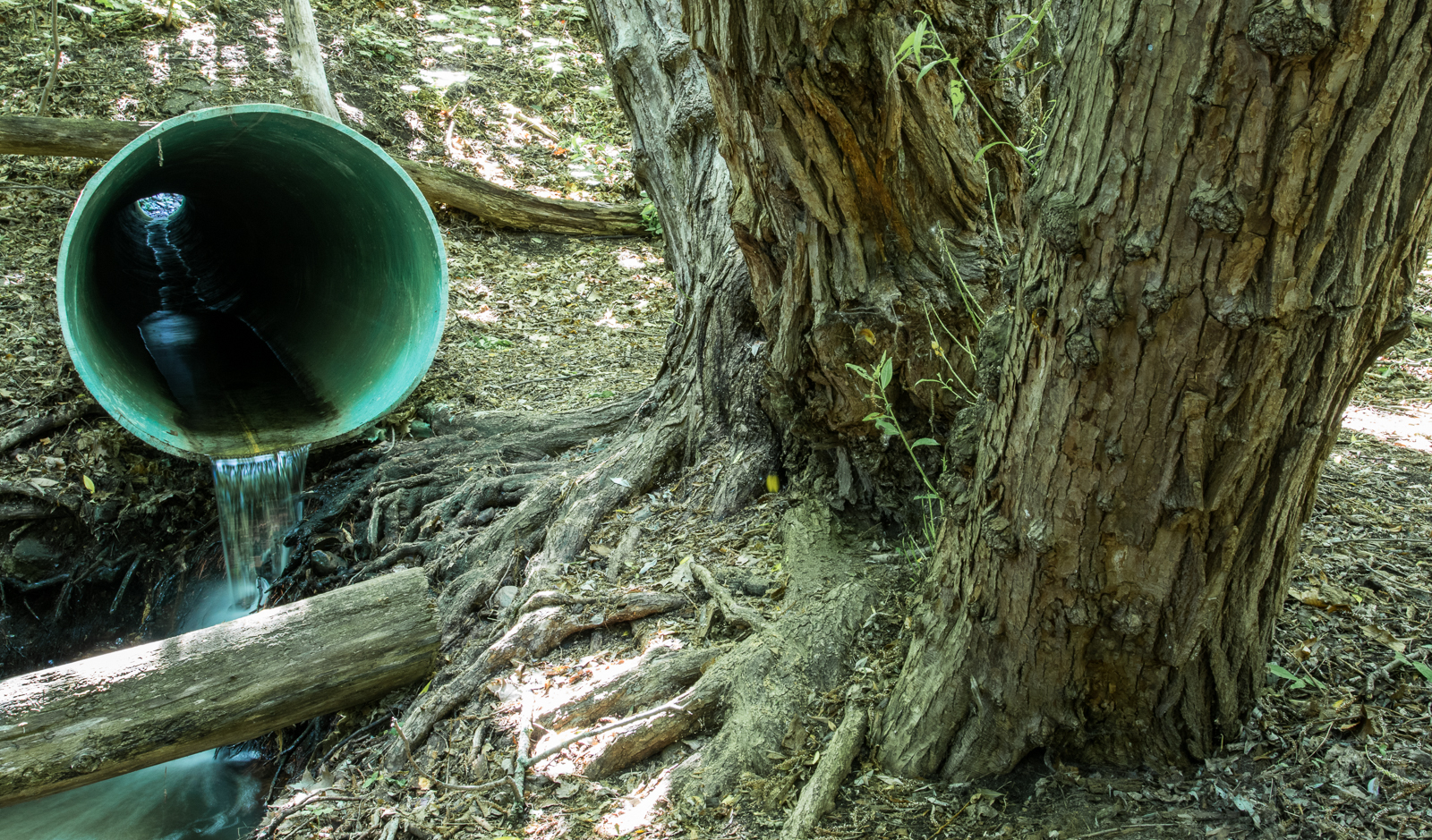 If storms are natural, storm
If storms are natural, storm Many invertebrates rely on small spaces and cracks between rocks in the stream bottom in order to hide from predators, lay eggs, and forage for food. Rocky headwaters offer plenty of this habitat. But farther downstream (like here at the confluence), sediment settling out of the water column can plug up these spaces, destroying this important habitat and the creatures who need it. Sedimentation is a natural process that always occurs to some degree in slow, downstream sections of a watershed. Some aquatic organisms even prefer sandy substrates. But development, agriculture, and stormwater-related erosion can cause massive, unnatural pulses of sediment that quickly bury rich and diverse habitats under sand and silt.
Many invertebrates rely on small spaces and cracks between rocks in the stream bottom in order to hide from predators, lay eggs, and forage for food. Rocky headwaters offer plenty of this habitat. But farther downstream (like here at the confluence), sediment settling out of the water column can plug up these spaces, destroying this important habitat and the creatures who need it. Sedimentation is a natural process that always occurs to some degree in slow, downstream sections of a watershed. Some aquatic organisms even prefer sandy substrates. But development, agriculture, and stormwater-related erosion can cause massive, unnatural pulses of sediment that quickly bury rich and diverse habitats under sand and silt.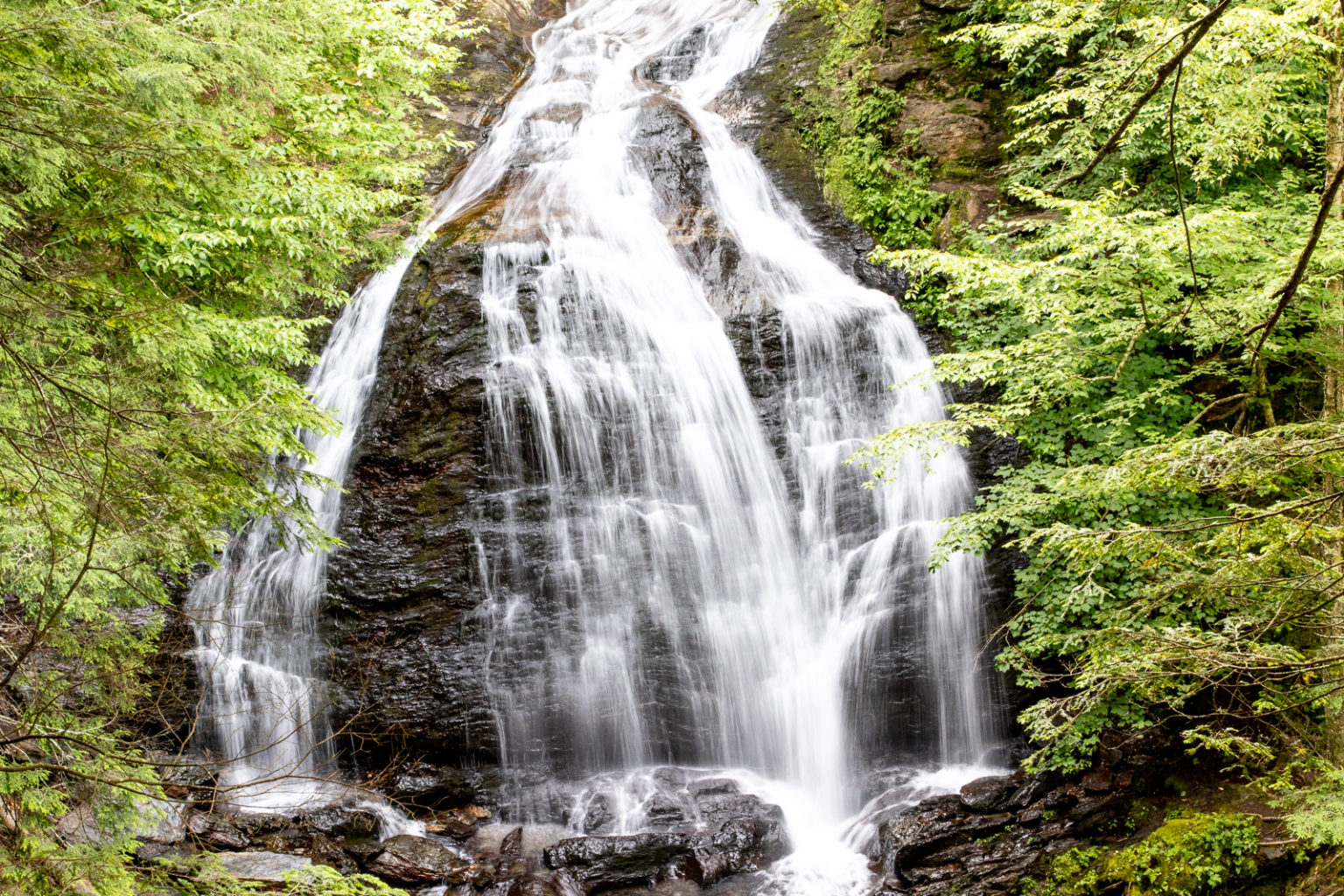 Riffles and waterfalls infuse streams with oxygen — and cold water can hold twice as much oxygen as warm water. The shaded, turbulent waters of healthy headwaters streams are fed by groundwater emanating from cracks in the cool underground bedrock. This cold, shaded, oxygen-rich environment is a fantastic place for aquatic invertebrates, and it supplies the whole downstream watershed with a clean, healthy water source. When headwaters lose their shade due to forest clearing or other development, the resulting rise in water temperature can make the stream uninhabitable to many fish and insects.
Riffles and waterfalls infuse streams with oxygen — and cold water can hold twice as much oxygen as warm water. The shaded, turbulent waters of healthy headwaters streams are fed by groundwater emanating from cracks in the cool underground bedrock. This cold, shaded, oxygen-rich environment is a fantastic place for aquatic invertebrates, and it supplies the whole downstream watershed with a clean, healthy water source. When headwaters lose their shade due to forest clearing or other development, the resulting rise in water temperature can make the stream uninhabitable to many fish and insects.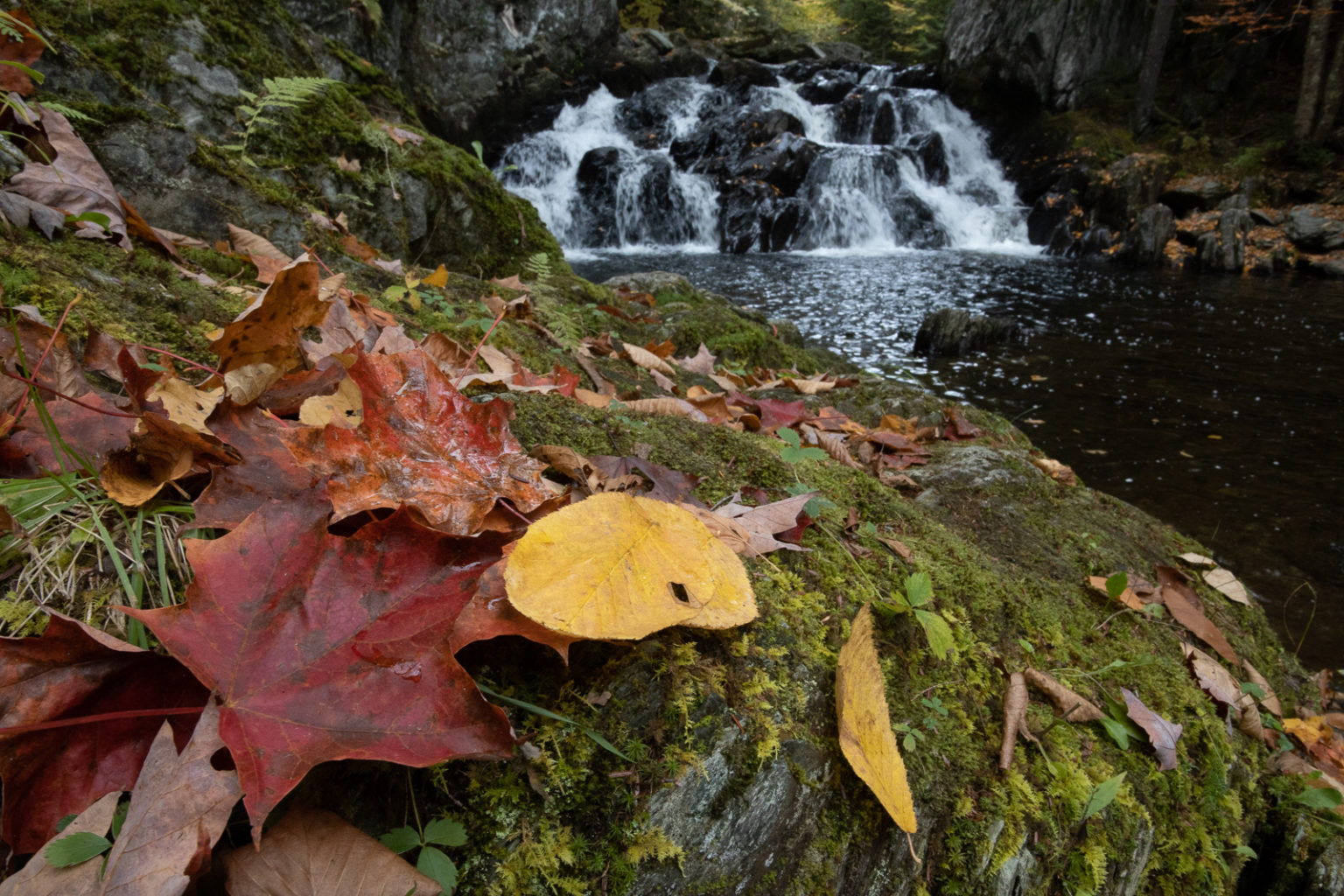 The trees over a healthy headwaters stream provide a buffet for aquatic life. Insects falling from the treetops become food for fish. Leaves fall and decompose, becoming a nitrogen source for the aquatic ecosystem. As fallen leaves stack up against river rocks like pages of a book, they provide shelter for many organisms. And many aquatic insects need to go ashore and climb a tree to finish their life cycle as adults.
The trees over a healthy headwaters stream provide a buffet for aquatic life. Insects falling from the treetops become food for fish. Leaves fall and decompose, becoming a nitrogen source for the aquatic ecosystem. As fallen leaves stack up against river rocks like pages of a book, they provide shelter for many organisms. And many aquatic insects need to go ashore and climb a tree to finish their life cycle as adults. 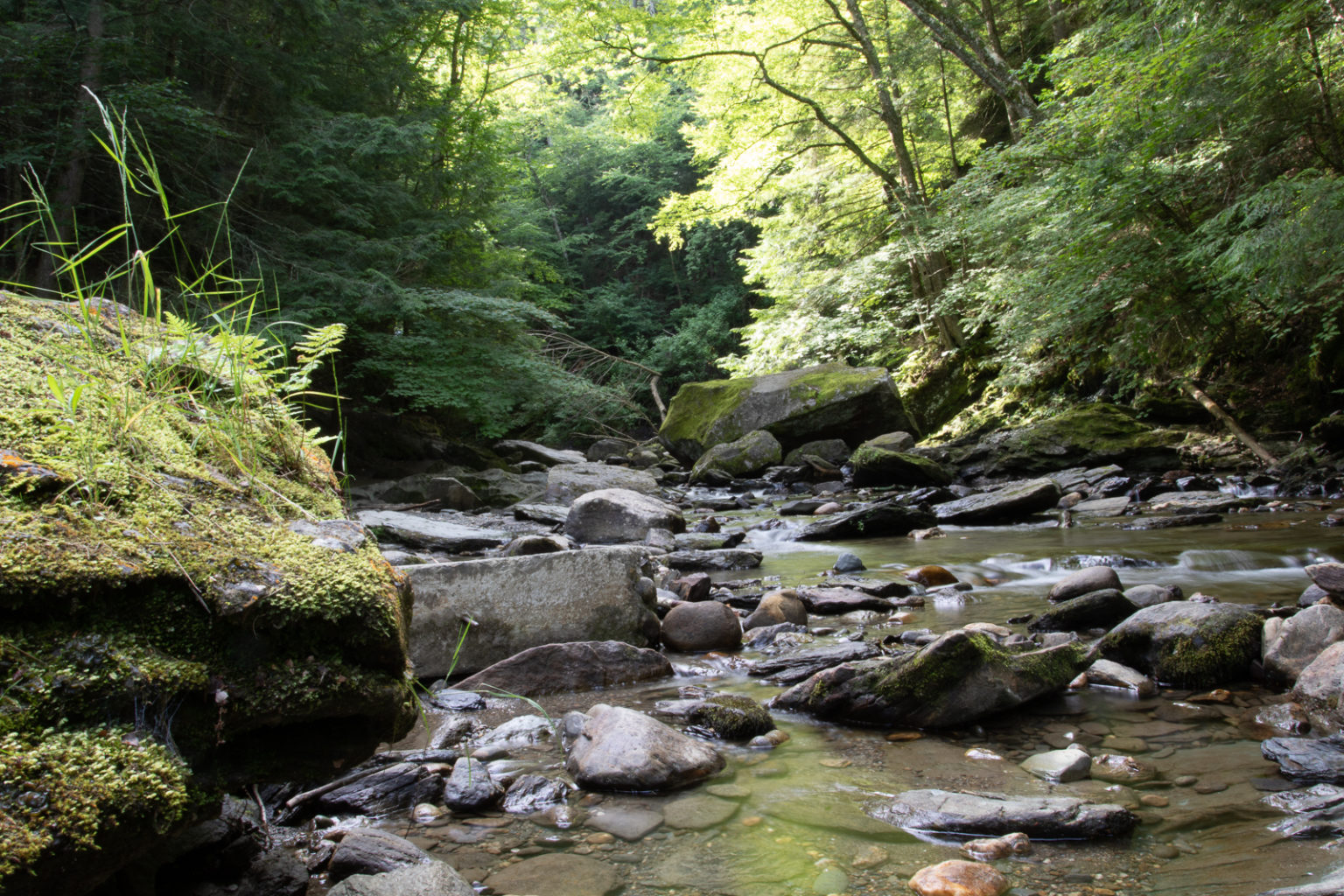 Some rivers hold more diversity underwater than forests hold on land. Every aquatic species prefers different conditions. Some species need slow water, and some need fast water. Some need large cracks between rocks, while some need sandy bottoms. Many fish require submerged boulders and tree trunks in which to hunt or hide. Some creatures depend on colder water, and others slightly warmer. Some prefer rough water, and others prefer deeper, slow-moving pools. A healthy river system can contain all this habitat diversity in just a short stretch.
Some rivers hold more diversity underwater than forests hold on land. Every aquatic species prefers different conditions. Some species need slow water, and some need fast water. Some need large cracks between rocks, while some need sandy bottoms. Many fish require submerged boulders and tree trunks in which to hunt or hide. Some creatures depend on colder water, and others slightly warmer. Some prefer rough water, and others prefer deeper, slow-moving pools. A healthy river system can contain all this habitat diversity in just a short stretch. 

